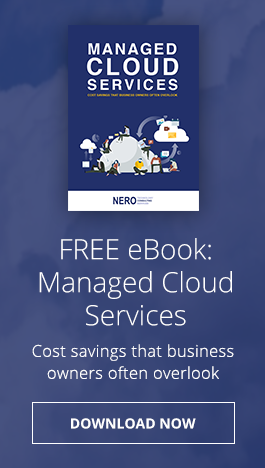As things get back to "normal", businesses need to evaluate what worked, what didn't and what’s coming. Practically overnight, organizations across the world had to shift to a remote workforce, and very few were well prepared to face the challenge.
“In the early weeks of the lockdown, many businesses in New York City came to us in desperate need of setting a fully remote work environment" explains Anthony Oren, President of Nero Consulting, who's been working in the IT industry for over 10 years advising organizations on technology.
The few companies that did have some sort of remote work policy in place, they were only set up to have a few employees using a VPN to access data remotely. But with the pandemic, the issue became scalability, all of a sudden they needed to support their entire workforce, and a simple VPN was not going to cut it.
“For us, as an IT Managed Service Provider in NYC, this was a great opportunity to help companies understand technology as an enabler of business continuity; making sure their technology lifecycle and investments support the organization’s growth objectives.” - Anthony Oren.
From a business continuity standpoint, technology will play a great role beyond 2020. Businesses of all sizes are now finding a great variety of tools and technologies that are cost-effective and scalable, and that offer a great user experience for better user adoption.
Here is a list of some technologies that we believe will shape the future of businesses for years to come:
Cloud-based apps to enhance remote work
The first concern when it comes to remote work is productivity. The world is obsessed with it, businesses want to know how to get things done more quickly and with less effort, and in the middle of a lockdown, many organizations turned to cloud (internet-based) technologies for answers. The appeal is clear, cloud-based applications are much easier to deploy and scale. And although end-user adoption is essential to capture a return on investment, many organizations are willing to take the chance based on the low up-front cost and risk this represents.
“These past few weeks have shown executives just how productive their employees can be from home. We predict that more organizations will continue to make remote work a key part of their operations, even after the covid19 crisis” - Anthony Oren.
From players like Google and Microsoft to solutions like Zoom or Slack, the variety of technologies available for SMBs is there. Platforms like Microsoft 365 and Microsoft Teams that had a great adoption in the enterprise market, are now more appealing to small-medium organizations. “We are seeing an interesting trend where small organizations are adopting tools like Microsoft Teams as a great way to ensure high productivity in their remote workers, which opens up a pool of opportunities for them to have highly qualified employees that are seeking for a more flexible work environment” - Anthony Oren.
From now on, businesses will face more pressure than ever to innovate quickly and fulfill rising customer and employee expectations. Many of the technologies, trends, and cultural norms that will shape tomorrow’s workplaces are already transforming forward-thinking organizations around the world. In other words, the future of work is here, and more importantly, it will transcend 2020.
Stronger Authentication Solutions
As remote work continues to grow in popularity, security priorities will need to adjust accordingly. In some ways, remote work technologies may provide a security boost as data shifts to centralized servers in the cloud instead of sitting on employee laptops, which greatly reduces the danger of a data breach resulting from a lost device.
However, adopting remote cloud-based solutions will force your organization to think in additional layers of security for user authentication. For example, a username and password alone will pose a significant risk as hackers could easily find those on the dark web. What’s the answer to password leaks? Businesses need to deploy Multi-Factor Authentication, which is available in Office365, or with point-solutions like Duo Security or even Google Authenticator. Platforms like Microsoft 365 will already include these security features, but they must be enabled by the system administrator.
VPN Cascading
Before the coronavirus lockdown, many organizations were relying on virtual private networks (VPNs) to allow employees to remotely access corporate resources. VPNs create a secure tunnel for workers and managers to remotely access data and applications, but the tool can sometimes be clunky, and many companies are running into trouble as they try to scale out VPNs to their entire workforce.
“One of the issues we often help to fix is VPN performance. For instance, organizations that have migrated to Office 365 have Microsoft Teams, SharePoint Online, and Exchange Online running through the corporate VPN, which really doesn’t allow for the scalability needed in a fully remote work instance. This is why we recommend routing data coming from these services over a VPN split tunnel configuration or VPN cascading.” - Anthony Oren.
As cloud and remote work technologies continue to shape the future of the workplace, businesses need to carefully consider a more robust VPN strategy to avoid performance issues that can damage the work experience of remote users.
VDI or DaaS?
Virtual desktop infrastructure (VDI) and desktop-as-a-service (DaaS) both offer employees a secure way to access their work desktops from practically anywhere, using any device.
The main difference between these two is hosting. Typically, virtual desktops (VDI) are hosted in a company’s own datacenter, while DaaS is hosted in the public or private cloud. Both solutions allow workers to log into work using a browser on their laptop, tablet or smartphones, using a mobile network or home WiFi connection, giving them immediate access to all of their work data and applications.
“Before Covid19, only a handful of businesses had a Virtual Desktop Environment in place, mostly reserved for executives at large enterprises. During the emergency, we helped businesses quickly deploy VDI, it’s a scalable technology that provides a great user experience. And most of these environments will continue to exist beyond 2020, as our clients are starting to realize the technology works, is stable and secure” - Anthony Oren.
When deploying a VDI or DaaS environment, network configurations are essential to avoid performance issues. A poor internet connection would definitely affect the user experience in the virtual desktop, pushing the user away. Here is where partnering with technology managed service provider can be beneficial, as they will support and manage your network identifying performance issues in a proactive manner.
These are just a few of the technologies we’ve seen had a greater impact on the ability to keep organizations going without major disruptions. With such rapid, massive movement towards a work-from-home model, one might be tempted to assume that the workplace is poised to become entirely digital. Although we don’t believe this will really be the case, we do see businesses more willing to invest in these technologies as a way to shape their business models and offer a better work-life balance increasing productivity and innovation.



Pingback: What is VDI and how does it work? | Nero Consulting